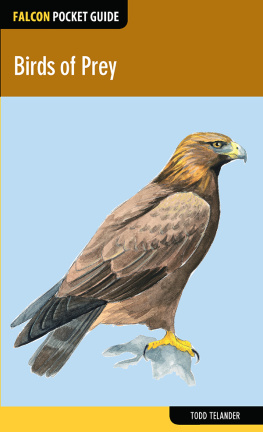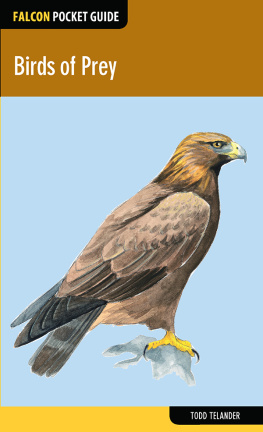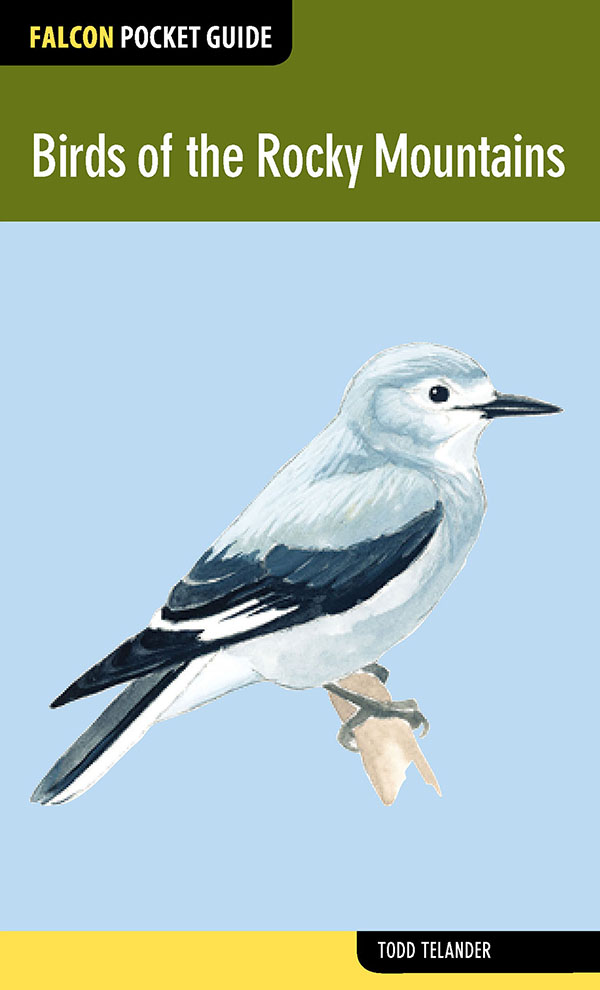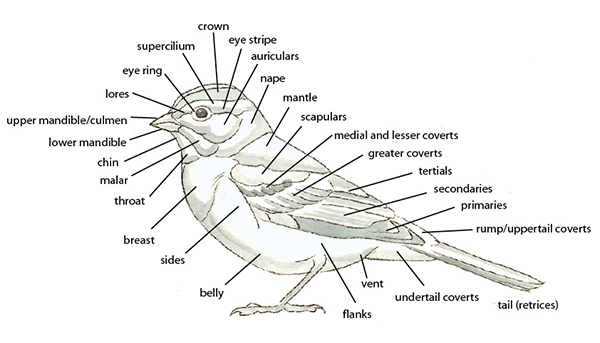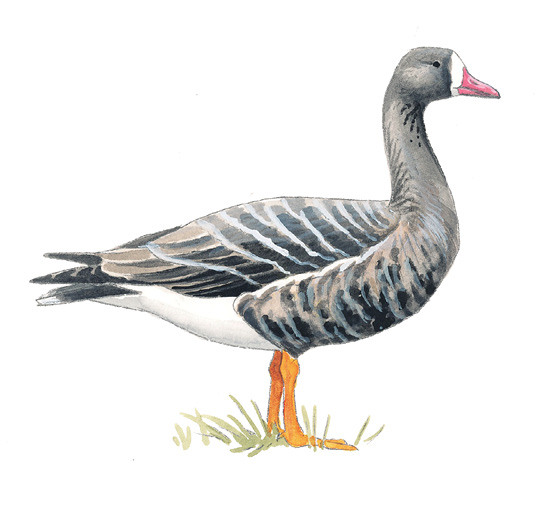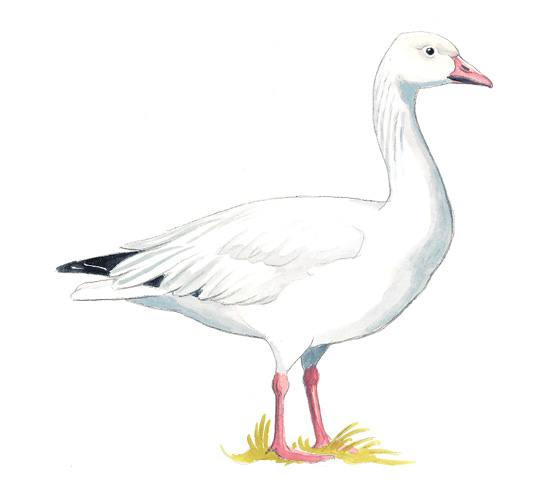Birds of the Rocky Mountains
Todd Telander
To my wife, Kirsten; my children, Miles and Oliver; and my parents, all of whom have supported and encouraged me through the years. Special thanks to Mike Denny for his expert critique of the illustrations.
Copyright 2014 Morris Book Publishing, LLC
Illustrations 2014 Todd Telander
ALL RIGHTS RESERVED. No part of this book may be reproduced or transmitted in any form by any means, electronic or mechanical, including photocopying and recording, or by any information storage and retrieval system, except as may be expressly permitted in writing from the publisher. Requests for permission should be addressed to Globe Pequot Press, Attn: Rights and Permissions Department, PO Box 480, Guilford, CT 06437.
FalconGuides is an imprint of Globe Pequot Press.
Falcon, FalconGuides, and Outfit Your Mind are registered trademarks of Morris Book Publishing, LLC.
Illustrations: Todd Telander
Project Editor: Staci Zacharski
Text Design: Sheryl P. Kober
Layout: Sue Murray
Library of Congress Cataloging-in-Publication Data is available on file.
ISBN 978-1-4930-1104-9
Contents
Introduction
The Rocky Mountains are a massive and splintered mountain chain running diagonally down the center of North America from British Columbia to New Mexico. It divides the continent into eastern and western sections, but it is also a meeting point of the two. To the east are the vast Great Plains leading to the Gulf of Mexico and the Atlantic Ocean, and to the west are broken arid plateaus leading to the Pacific Ocean. This geographic diversity provides for an incredible variety and number of bird species, and gives birders a unique opportunity to see western and eastern birds of North America whose ranges intersect here. From high-altitude tundra, montane parks, grasslands, river canyons, and desert sagelands, the Rocky Mountains support habitat for resident breeders and seasonal visitors, as well as those passing through on migration to and from South America and Canada. This guide describes the most common birds you are likely to encounter here and includes some that are only found in this area.
Notes about the Species Accounts
Order
The order of species listed in this guide is based on the latest version of the Checklist of North American Birds, published by the American Ornithologists Union. In an effort to remain current, I have used the most recent arrangement, so the arrangement of some groups, especially within the nonpasserines, may be slightly different than that of older field guides.
Names
For each entry I have included the birds common name as well as the scientific name. Since common names tend to vary regionally, or there may be more than one common name for each species, the universally accepted scientific name of genus and species (such as Nucifraga columbiana for Clarks Nutcracker) is a more reliable identifier. Also, you can often learn interesting facts about a bird from the English translation of its Latin name. For instance, the term nucifraga derives from the Latin nucis, meaning nut, and fraga, meaning to break.
Families
Birds are grouped into families based on similar traits, behaviors, and genetics. When trying to identify an unfamiliar bird, it is often helpful to first place it into a family, which will limit your search to a smaller group. For example, if you see a long-legged, long-billed bird lurking in the shallows, you can begin your search in the family group of Ardeidae (Herons and Egrets), and narrow your search from there.
Size
The size listed for each bird is the average length from the tip of its bill to the end of its tail, if the bird was laid out flat. Sometimes females and males vary in size, and this is mentioned in the text. Size can be misleading if you are looking at a small bird that happens to have a very long tail or bill. It may be more effective to use the birds relative size, or judge the size difference between two or more species.
Season
The season provided in the accounts is when the greatest number of individuals occur in the Rocky Mountain region. Some species are year-round residents that breed here. Others may spend only summers or winters in the state, and some may be transient, only stopping during migration in the spring or fall. Even if only part of the year is indicated for a species, be aware that individuals may arrive earlier or remain for longer than the given time frame. Plumage also changes with the season for many birds, and this is indicated in the text and illustrations.
Habitat
A birds habitat is one of the first clues to its identification. Note the environment where you see a bird and compare it to the description listed. This can be especially helpful when identifying a bird that shares traits with related species. For example, Cattle Egrets and Snowy Egrets are similar, but Cattle Egrets are found in drier fields and pastures, while Snowy Egrets prefer swamps and open water.
Illustrations
Illustrations show the adult bird in the plumage most likely to be encountered during the season(s) it is in the Rocky Mountains. If it is likely that you will see more than one type of plumage during this time, the alternate plumage is shown as well. For birds that are sexually dimorphic (females and males look different), I have usually included illustrations of both sexes. Other plumages, such as those of juveniles and alternate morphs, are described in the text.
Bird Topography and Terms
Bird topography describes the outer surface of a bird and how its various anatomical structures fit together. Below is a diagram outlining the terms most commonly used to describe the feathers and bare parts of a bird.
NONPASSERINES
GEESE, DUCKS, MERGANSERS
Greater White-fronted Goose, Anser albifrons
Family Anatidae ( Geese, Ducks, Mergansers )
Size: Large, but highly variable 28"
Season: Spring and fall during migration
Habitat: Swamps, marshy areas, fields
The Greater White-fronted Goose is a medium-size goose that breeds in the Arctic and migrates through the Rocky Mountains to wintering grounds farther south. Its plumage is grayish brown above and on the head and neck, with white tail coverts and a white terminal tail band. The breast and flanks are barred with brown and black, and the bill is pinkish, bordered at the base by white along the front of the face (lacking in juveniles). The upper portion of the flanks form a thin white line. These geese forage for a variety of plants or small invertebrates in marshes or nearby fields. The adult is illustrated.
GEESE, DUCKS, MERGANSERS


